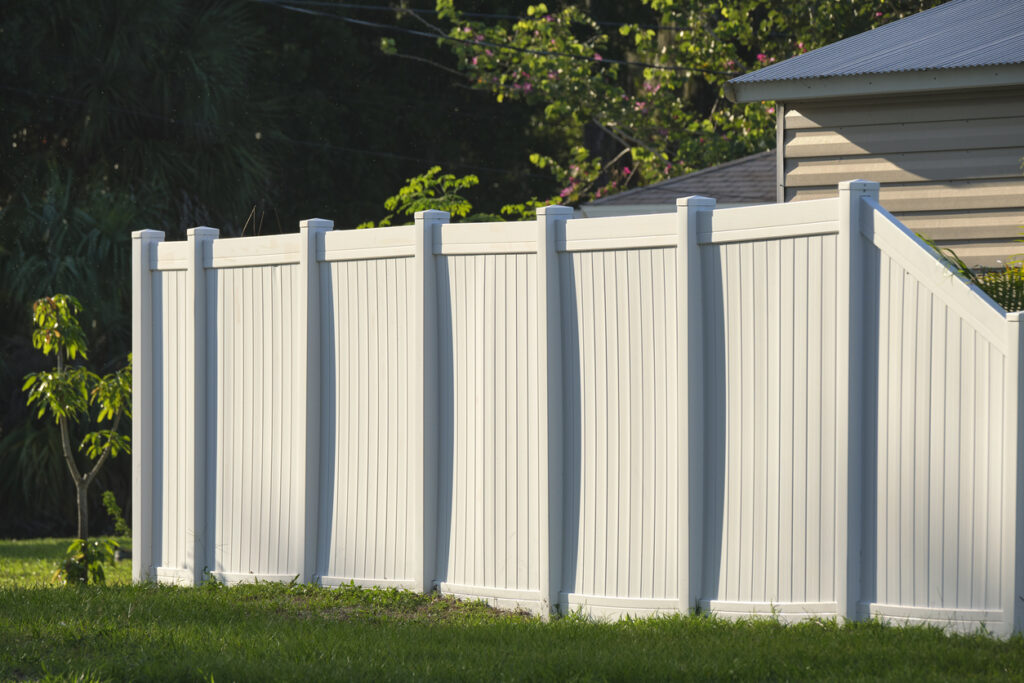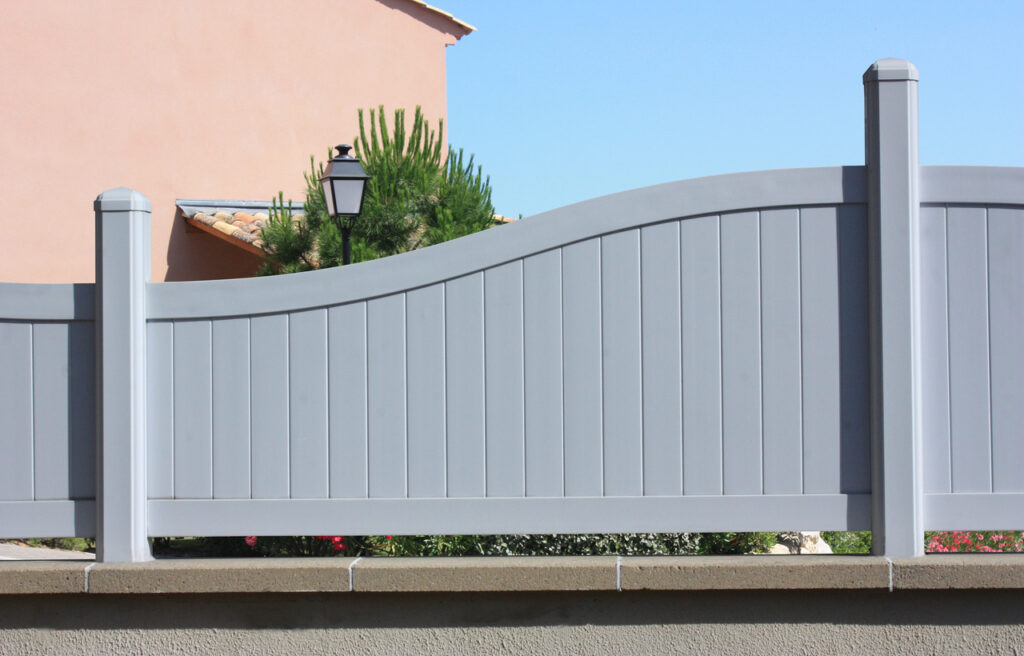Wood fences bring warmth, privacy, and curb appeal to any property. They also face sun, rain, wind, and soil microbes every day. Choosing a style that lasts is not just about looks. It’s about wood species, design, hardware, finish, and maintenance. In this guide, we break down which wood fence styles hold up best, why they last, and what you can do to extend service life with simple, proven steps.
We’ll cover:
- The wood species and styles that deliver the longest lifespan
- Construction details that make or break durability
- Maintenance habits that add years to your fence
By the end, you’ll know how to pick a long-lasting wood fence with confidence.
Key Takeaways
- Western Red Cedar and pressure-treated Southern Yellow Pine are the top choices for long life.
- Styles that promote drainage and airflow, like board-on-board and shadowbox, resist rot longer.
- Raised posts, sealed end grains, and stainless fasteners can add 5–10 years to a fence.
How We Define “Longest Lasting”
We look at real-world performance in the Mid-Atlantic and coastal regions like Delmarva, where humidity, salt air, and freeze-thaw cycles test fence materials. A fence’s service life depends on environment, exposure, and care. Typical ranges:
- Cedar: 20–30 years with proper maintenance
- Pressure-treated pine: 15–25 years
- Redwood: 25–35 years (less common regionally and more costly)
- Untreated spruce or fir: 5–12 years (not recommended for longevity)
We aim for styles and builds that consistently reach the top end of those ranges.
The Wood Species That Go the Distance (and Why)
The species you choose sets the baseline for longevity. Natural rot resistance and preservative treatment both matter.
Western Red Cedar: Natural Resistance, Stable Performance
- Why it lasts: Cedar contains natural oils and extractives that resist rot and insect damage. It also has low density and good dimensional stability, so it warps and cracks less.
- Typical lifespan: 20–30 years when installed and maintained correctly.
- Best uses: Pickets and rails in privacy or semi-privacy designs. Posts can be cedar if they’re elevated from soil and sealed, but many builders use pressure-treated posts for stronger ground contact performance.
Practical tip: Seal cedar’s end grain the day it’s cut. End grain acts like a straw, drawing in moisture.
Pressure-Treated Southern Yellow Pine: Strength and Preservatives
- Why it lasts: Copper-based preservatives penetrate deeply, protecting against rot and termites. SYP is strong and takes fasteners well.
- Typical lifespan: 15–25 years, longer with consistent sealing and careful ground detailing.
- Best uses: Posts and structural members. You can pair PT posts with cedar pickets for the best of both worlds—strong posts and attractive, stable infill.
Practical tip: Let new PT wood dry 2–4 weeks before staining or sealing so coatings adhere well.
Redwood: Excellent Durability, Lower Regional Availability
- Why it lasts: Natural tannins resist decay. Comparable or better longevity than cedar, with a higher price tag and limited local supply.
- Typical lifespan: 25–35 years with care.
- Best uses: Premium projects where budget allows and supply is reliable.
What to Avoid for Longevity
- Untreated spruce or fir: Low natural decay resistance. Often used in budget panels that fail early.
- Mixed or unknown species: Inconsistent performance and unpredictable aging.
Fence Styles That Last Longer (Design Matters)
Style affects airflow, water shedding, and structural stress. Designs that trap water or block wind without reinforcement tend to age faster.
Board-on-Board: Durable Privacy with Built-In Drainage
- How it’s built: Overlapping vertical boards on both sides of the rail. Unlike stockade, slight gaps let the fence “breathe.”
- Why it lasts: Better airflow dries the boards after rain. The overlapping pattern reduces direct sun exposure on any single board, limiting cupping and checking.
- Best practice: Use stainless or hot-dipped galvanized ring-shank nails or exterior screws. Fasteners matter as much as the wood.
Expected lifespan: 20–30 years with cedar pickets and PT posts; 15–25 with all-PT components.
Shadowbox (Good Neighbor): Strength and Wind Relief
- How it’s built: Alternating boards on each side of the rails, creating a semi-private look.
- Why it lasts: Air can pass through, reducing wind load. Lower wind stress means fewer split boards and looser fasteners over time.
- Best practice: Use three rails for 6-foot fences. Taller sections (8 feet) need four rails or steel inserts.
Expected lifespan: Similar to board-on-board, often with better performance in exposed sites.
Post-and-Rail with Wire Infill: Simple, Dry, and Long-Lived
- How it’s built: PT posts and horizontal rails with welded wire or woven wire.
- Why it lasts: Fewer vertical boards, less trapped moisture, and open construction that dries fast. Rails can be replaced as needed.
- Best practice: Keep posts above grade with domed concrete caps to shed water. Use Class 3 or Class 4 galvanized wire for corrosion resistance.
Expected lifespan: 20–30 years with PT posts and quality wire.
Styles That Need Extra Care
- Solid stockade/privacy with tight boards: Traps moisture and swells. Use a breathable design or leave minimal gaps.
- Horizontal board fences: Trendy, but horizontal boards shed water poorly. Use rot-resistant species, back priming, and consistent sealing. Add mid-span support to limit sag.
Build and Maintenance Practices That Add Years
Two fences made from the same wood can age very differently. Details during installation and routine care make the difference.
Smart Post Installation
- Go deeper: 30–36 inches deep, below frost line where applicable.
- Drainage first: Add 4–6 inches of gravel at the hole bottom to keep water away from the post end.
- Crown the concrete: Slope it away from the post to prevent water pooling. Leave the top of the post slightly above grade so wood doesn’t sit in soil.
- Choose right wood: Use 0.15–0.23 pcf treated PT for above ground and 0.40 pcf (UC4A/B) for ground contact or high-exposure areas.
Result: Less rot at the post base and fewer lean repairs over time.
Rails, Fasteners, and Hardware
- Rails: Three rails for 6-foot fences; four for 8-foot. Use corrosion-resistant hangers if you add metal posts or stiffeners.
- Fasteners: Use stainless steel (Type 304 or 316 near salt air) or hot-dipped galvanized. Avoid electro-galvanized. Corroded fasteners stain wood and fail early.
- Gate hardware: Use heavy-duty, adjustable hinges and latches. Gates see the most stress—build them like small doors.
Finishes and Coatings
- Seal end grain: Back-prime and seal cut ends the day you cut them.
- Choose a breathable finish: High-quality, UV-blocking, penetrating stains last longer than film-forming paints on dimensional lumber. Semi-transparent stains balance protection and appearance.
- Recoat schedule: Every 2–4 years for semi-transparent stains; 1–2 years for clear sealers; 5–7 years for solid-color stains (inspect for peeling).
Ground and Water Management
- Keep clearance: Maintain a 2-inch gap between the bottom of pickets and grade. Don’t mulch against the fence.
- Control sprinklers: Aim heads away from boards. Daily soaking shortens life.
- Plant smart: Vines trap moisture. If you want greenery, use a trellis standoff to keep plants off the boards.
Seasonal Inspection Checklist
Twice a year, walk the fence line:
- Tighten or replace loose fasteners
- Check post plumb and gate alignment
- Touch up stain on high-wear spots and cut ends
- Clear soil or mulch away from the lower boards
- Trim vegetation for airflow
These habits can add 5–10 years to your fence.
So, What Style Lasts the Longest?
If we had to choose one winner for most homes, we’d pick a cedar board-on-board or shadowbox style with pressure-treated posts, stainless fasteners, and a breathable stain. This combination balances privacy, airflow, and structural strength. In open, windy sites, shadowbox often edges out board-on-board due to better wind relief. For rural or large properties, post-and-rail with quality wire offers a low-maintenance, long-lived option.
Local climate matters. In humid, coastal areas, use stainless fasteners, raise posts with proper drainage, and stick to species with proven decay resistance. When built and maintained as outlined above, these fences routinely reach the top of their expected service life.
Frequently Asked Questions About Wood Fences
Which fence style handles wind the best?
Shadowbox designs handle wind well thanks to built-in gaps. Three or four rails and proper post depth improve performance in exposed areas.
What finish protects a wood fence best?
A high-quality, UV-blocking, penetrating stain works well. Recoat every 2–4 years. Clear sealers need more frequent upkeep and protect less from UV.
Build Smart, Maintain Simple, and Your Fence Will Last
The longest-lasting wood fences combine the right species with smart design and careful installation. Cedar or pressure-treated pine, board-on-board or shadowbox, stainless fasteners, and a breathable stain—that’s the formula we trust. Add routine upkeep, and your fence will look good and work hard for decades.
If you’re planning a project or comparing options, explore our wood fence styles here: wood fence. We’re local. We build fences that stand up to our weather and our soil. We’re ready to help you choose the right design for your property.
- Get a clear plan for species, style, and hardware
- See examples that match your budget and timeline
- Schedule installation with experienced, local builders
Anderson Fence is a trusted provider of high-quality fencing solutions, specializing in durable wood fences that combine style and functionality. With years of experience, expert craftsmanship, and a commitment to customer satisfaction, Anderson Fence helps homeowners and businesses enhance their properties with long-lasting, beautifully designed fences. Have questions or want a free estimate? Please contact us.



